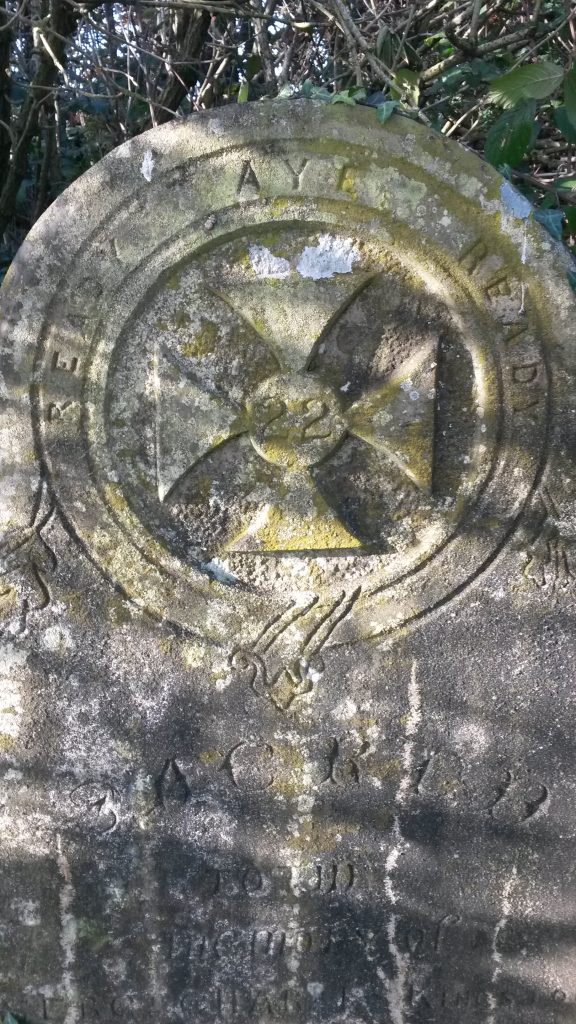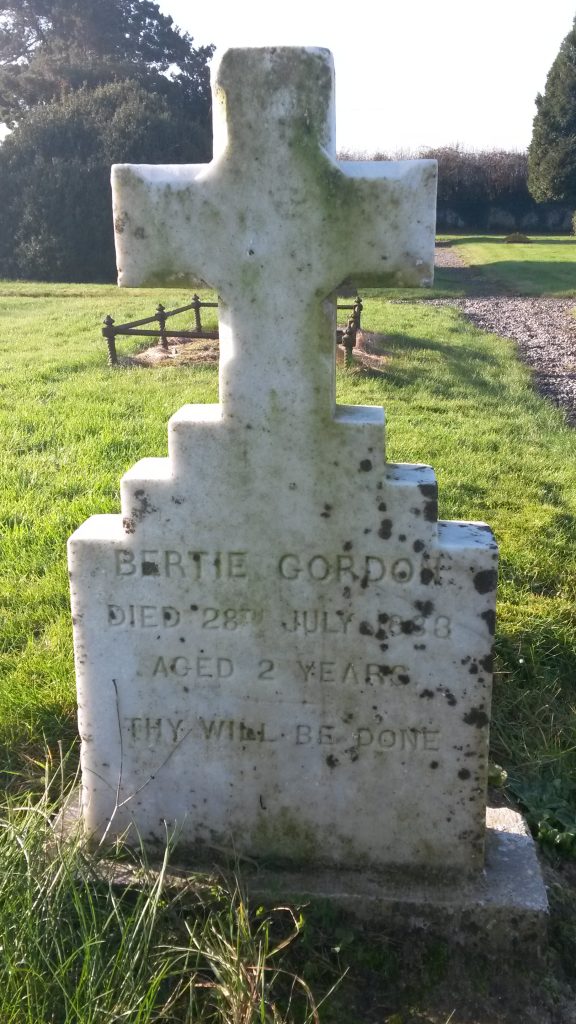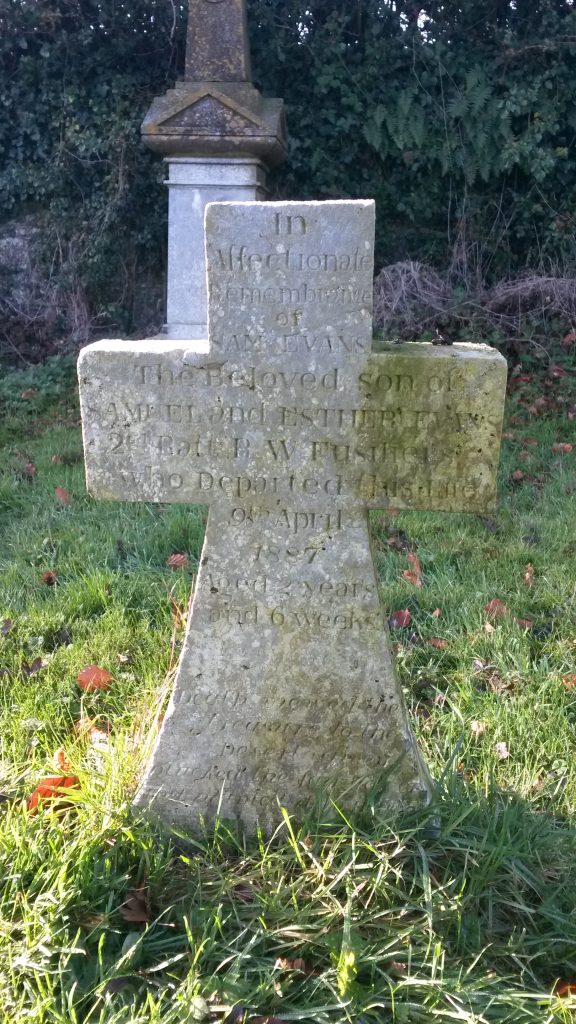The burial of John Leonard in Cork’s military cemetery in 1866 attracted ‘a mob of 200 or 300 people’ anxious to observe his interment.1 John Leonard was a popular man but he was an ‘old soldier’ rather than an enlisted man who died in service. His burial was not accompanied by military honours such as a gun carriage for a hearse. The caretaker claimed that ‘it was by privilege’ that Leonard’s remains were interred in the military cemetery.2 Why was an old soldier granted the privilege of burial in a cemetery owned and maintained by the city’s military authorities? Opened in 1849, the military cemetery provided burial space for the officers, men and their families who lived in Cork city’s large barracks.3

As my previous post explained, even veterans of the most celebrated conflicts were not buried in military cemeteries. Given that the army offered no support to men after their discharge, it is unlikely that old soldiers were intended to benefit from this burial ground. Yet the army also tried to portray itself as a family, where a shared attachment to the institution could simulate a kin relationship.4 The military burial grounds across Ireland that reflect the army and the humanity of the individual show that the military were occasionally successful in this endeavour. John Leonard’s friends probably secured a burial plot by appealing to the ideology of the military family. Although the preferred military identity promoted by the army deliberately marginalised soldier’s biological families, cemeteries also reveal the existence of women and children who were poorly documented by the institution.
To arrange the funeral, John Leonard’s friends and family asked permission from senior officers in Cork military district to inter the old soldier among serving military men and their families. Since the cemetery’s caretaker was employed by the Assistant Adjutant General, Colonel William Sherbrooke Ramsey Norcott, it is possible that he granted permission for burials.

Cork’s military cemetery is very poorly preserved – there is no surviving burial register and the gravemarkers have been disturbed– so we do not know how ex-soldiers secured a burial plot.5 Petitioning by acquaintances and former colleagues who could describe long service, dedication and sobriety may have played a significant role. This informal process may never have been recorded because these examples of senior officers exercising discretion did not affect the military balance book.6 The burial ground also contained memorials that testified to the close personal bonds between fellow soldiers. Regimental badges and mottoes adorned the headstones of soldiers that were purchased by their grieving mess-room fellows.


The personal bonds between enlisted men were celebrated in the cemetery, embodying the idea of the regiment as a surrogate family. Old soldiers like John Leonard desired to be interred in a burial ground that celebrated the army as a family. Burial in a military cemetery was desirable because it offered post-mortem recognition of military comradeship that thrived in barracks across the world.
These long-closed and abandoned barrack cemeteries have a unique intimate character. Unlike headstones in Commonwealth War Graves Commission cemeteries which mimic uniformed men on parade, the earlier military cemeteries are populated by diverse memorials to men, women and children of all ages, whose memorialisation was not determined by a central committee adjudicating on their war service.7 In addition to articulating the idea of the army as a family, these home-front cemeteries were domestic spaces where military families supported by the regiment those living ‘on the strength’ buried their children. In Ballincollig military cemetery, of the 200 burials whose age is known, 100 are children under 10 years old.8 The headstones of children are prominent among the surviving memorials in Fermoy’s newer military cemetery.9

Parents then left the town and the family memorial behind as the army transferred soldiers between different barracks across the world. These grave markers show that parents wished to memorialise their children even though the burial plot was destined not to be a family grave. Although the families of soldiers were often viewed by military authorities as an expensive encumbrance, these memorials demonstrate that army families chose to remember their dead children in an institutional setting that defined them as army children. As a soldier’s widow proudly stated ‘I was born in the service’.10 Many army children also died in the service, their short, precious lives remembered in military cemeteries across Ireland and the Empire. Military cemeteries founded before World War I reveal the reality and the ideal of the nineteenth-century British army family.

- Cork Examiner, 6 March 1866. Such were the crowds that a scuffle broke out. ↩
- Cork Examiner, 6 March 1866. ↩
- Dan Harvey and Gerry White, The Barracks: a history of Victoria/Collins Barracks, Cork (1997), p 28. ↩
- For example, see David French, Military Identities: The Regimental System, the British Army and the British People c. 1870-2000 (2005). ↩
- A survey of grave markers was undertaken in 2009 and is now preserved in the Cork City and County Archives, http://www.corkarchives.ie/collections/overviewandguidetosomemajorcollections/cemeteryrecords/. ↩
- Soldier burials in the nineteenth century were arranged at regimental or unit level, with no input from London beyond the leasing of burial grounds. See http://www.archhistory.co.uk/taca/graves.html ↩
- A grave is maintained by the CWGC only if strict criteria are fulfilled. See http://www.infromthecold.org/war_grave_criteria.asp ↩
- Anne Donaldson, British Military Graveyard: Ballincollig, Cork Ireland 1810 to 1922 (2003), p 61. Donaldson has published her list of burials here http://www.interment.net/data/ireland/cork/british/index.htm ↩
- Each barrack in Fermoy has an adjoining cemetery, the burial ground behind New Barracks is well preserved. ↩
- Waterford Evening News, 17 May 1850. ↩